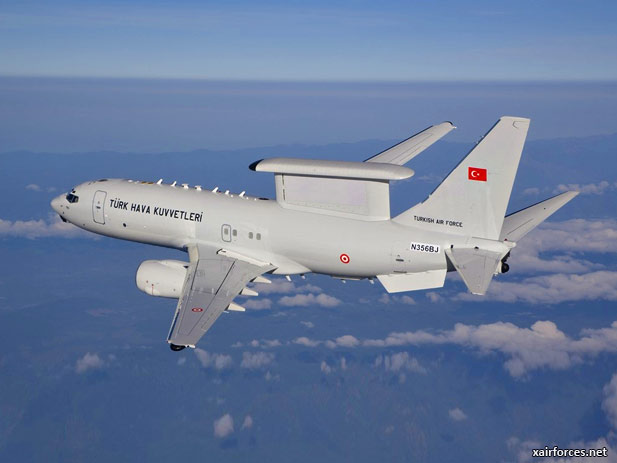
Boeing pays penalty for Turkish AWACs

Defense Minister İsmet Yılmaz has admitted that major delays in Turkey’s multibillion-dollar program for the purchase of four airborne early warning and control (AEW&C) aircraft from Boeing were due to the company’s failure in developing the system and “various force majeure” involved in the program.
In an April 8 reply to a question motion submitted by main opposition Republican People’s Party (CHP) deputy Oktay Eksi, Yılmaz said Boeing had been paid only for the work it had done and legal sanctions had been imposed for the delays that were considered the company’s failure. “Compensation for the delays and other legal sanctions are being imposed [as part of Boeing’s contractual obligations],” Yılmaz said.
Under a July 23, 2003 contract, priced at over $1.6 billion, Boeing was to develop and deliver four AEW&C aircraft to the Turkish Air Force (TuAF) in 2008. The program involved 737-700 aircraft, ground radar and control systems, plus ground control segments for mission crew training, mission support and maintenance support.
Turkey’s contract came one year after Australia signed a similar deal for six 737-700 AEW&C aircraft and related systems. Australia’s program faced similar delays, but eventually Boeing delivered four aircraft and has begun training Royal Australian Air Force maintainers.
Defense procurement officials said neither Turkey nor Boeing was entitled to disclose the clauses deemed as “commercial secrecy” in the original contract, including the compensation for delays. The generic compensation in any major defense contract is 0.03 percent per day, but different contracts can have lower or higher percentages and different rules of application.
“In the case of Boeing’s delays there has been an agreement as to how the company should compensate for the delays,” a senior official told the Hürriyet Daily News. He did not say how much or whether the payment would be in cash or in the form of parts and maintenance supplies because “disclosing that would mean a breach of the contract.”
Israeli barrier
Defense officials also said that the “force majeure” Yılmaz mentioned in his official explanation essentially referred to delays outside Boeing’s control such as a now-defunct Israeli blockade of some of the parts in the program.
A clampdown by the Israeli Ministry of Defense (MoD) on the delivery of subsystems for the Turkish AEW&C program was only recently removed. Elta, the Israeli maker of the Electronic Support Measures (ESM) systems for the 737-700 serial had been lobbying since autumn 2011 for the removal of the MoD licensing block preventing the delivery of the systems to Turkey. Elta is a subcontractor of Boeing in this program.
The ESM is a passive, purely defensive system that does not enhance the attack capabilities – firepower – of the TuAF. The AEW&C system as a whole can be used offensively to direct fighters to their target locations, or defensively in order to counter attacks by enemy forces, both in the air and on the ground. However, defense analysts agree that the ESM is a defensive subsystem.
The Israeli MoD in December 2011 refused to allow Elta and Elbit, another Israeli defense company, to complete deliveries of previously authorized long-range aerial photography systems to the TuAF. This move cost Elta $55 million in lost revenue, and Elbit reported a $90 million loss.
The clampdown on the Boeing-led program was also embarrassing for the U.S., as the ban marked the first Israeli government decision to force a U.S. weapons-maker to fail to fulfill its contractual commitments to a third country governmental buyer – and at a time when the program itself faced major delays.
Elta was building the EMS systems for four aircraft under a subcontract worth more than $100 million.
The 737-700 aircraft are to be used as part of Turkey’s NATO capabilities. An airborne early warning and control system is an airborne radar system designed to detect aircraft, ships and vehicles at long ranges and control and command the battle space in an air engagement by directing fighter and attack aircraft strikes.
Used at a high altitude, the radars on the aircraft allow the operators to distinguish between friendly and hostile aircraft hundreds of miles away.
Source: Burak Bekdil ANKARA - Hürriyet Daily News - 17 April 2013
Photo: The Turkish Air Force Boeing 737-700 AEW&C Aircraft. Turkey had agreed with Boeing for development and delivery of four ‘airborne early warning and control’ (AEW&C) aircraft with a contract signed in 2003. (Photo by Boeing)
(17.04.2013)
|